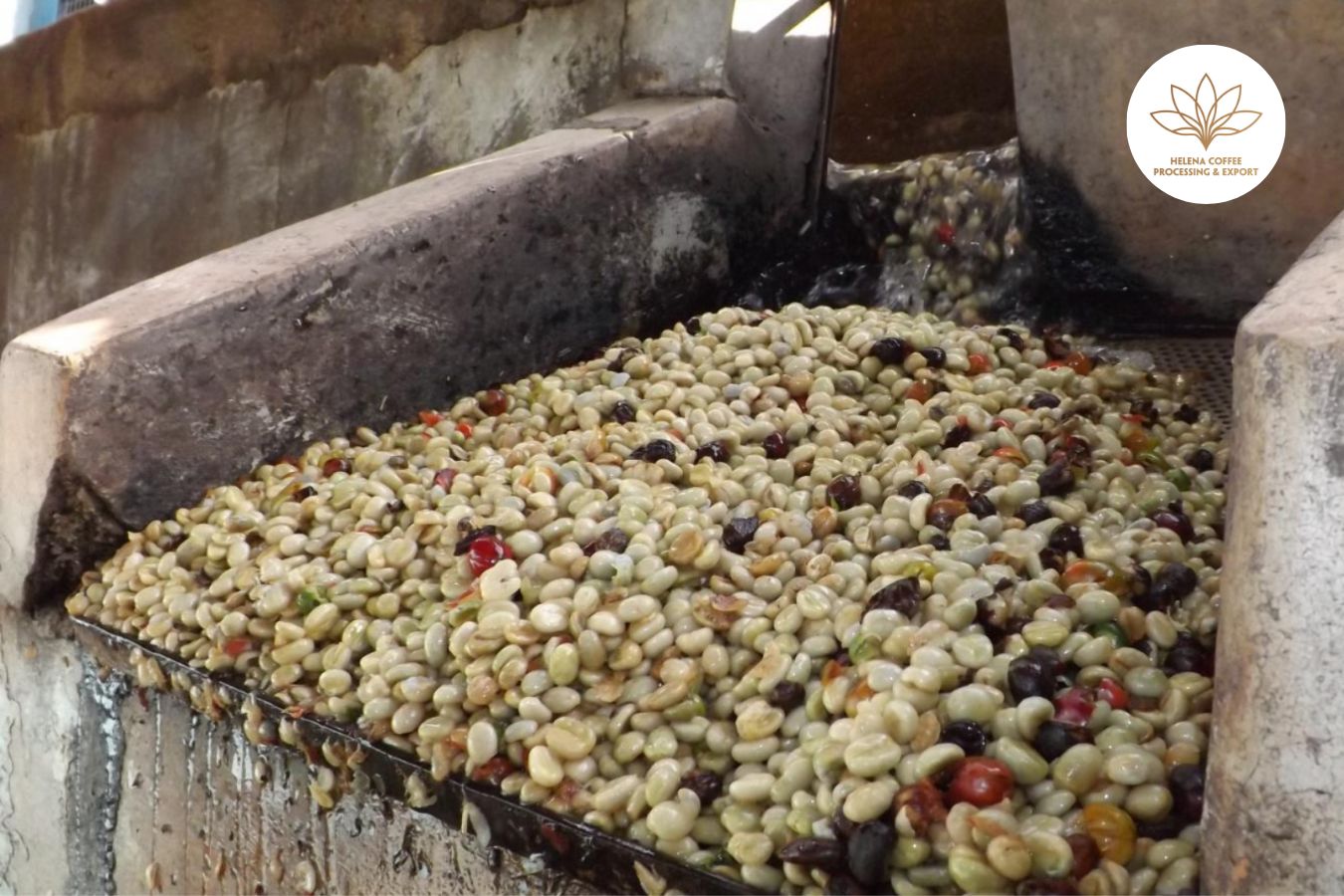
Comparison Of Dried And Wet-Processed Coffee: Different processing methods will create different flavors. Although dried processing has a more vital physicality, the taste and flavor are not comparable to wet processing.
Chin picking is, of course, better than green picking, drying on the truss is, of course, better than drying in the background, fermenting with wet processing technology is, of course, better than dry processing. The process of sieve, coloring, or flaking coffee beans.
The difference in the region, weather, soil. It’s the main factor that makes the difference in the taste of coffee. Let’s learn about the Comparison of dried and wet-processed coffee with Helena.
Dried processed coffee:

Wet processed coffee:
Wet processed coffee is a relatively complex method. It is necessary to remove the four layers surrounding the coffee beans.
This process makes coffee beans cleaner, brighter sweeter, and more acidic. Most countries with high-quality coffee use wet processing.
The price of wet-processed coffee is higher than dry processing, but the biggest problem is the impact on the environment. So so far, there are not many businesses to invest in. In Vietnam, most relatives use dry processing methods.

Honey
The quality of honey processing coffee depends on the amount of natural sun. Excellent or lousy coffee depends on the sunshine of the first three days. The result gives us a drink characteristic of both wet and dry processing methods.

Raisin-style coffee: The nuts selected for processing are floating seeds due to old ripening.
They have a taste that some of the world’s leading tasting experts rate as much sweeter than traditional Honey coffee.
The coffee berries float because they dry too long on the tree before being picked. This allows the particles to interact with mucus for a more extended time before the start of the fermentation process. The seeds are removed from the rest of the floating particles using a barrel system developed by Eduardo Sampaio in Brazil. These coffees are then classified and processed in a honey style. However, this is only a more experimental form of processing than mass.
Comparison Comparison of dried and wet-processed coffee
Dried coffee is sweeter, more complex, and physically more potent in Brazil. The rice is thicker, very suitable for the Italian espresso style. In Vietnam, dried processed coffee is also a mass method; however, the psychology of picking green for fear of theft has lost the real taste of coffee.

Each area has its proper processing techniques. The techniques of treating each other will achieve different desired flavors. Depending on the climate, coffee-like, a culture of enjoyment, we have a suitable processing method.
Coffee flavor:
